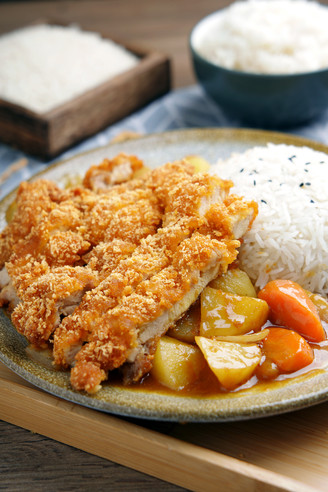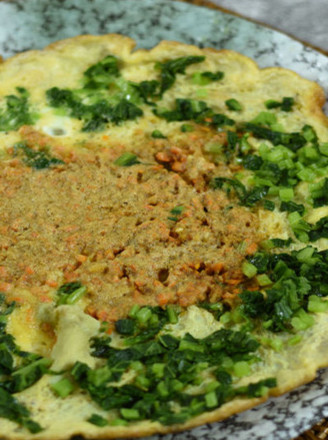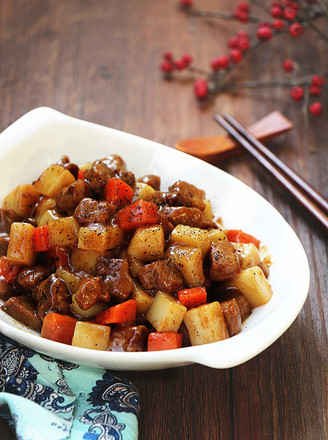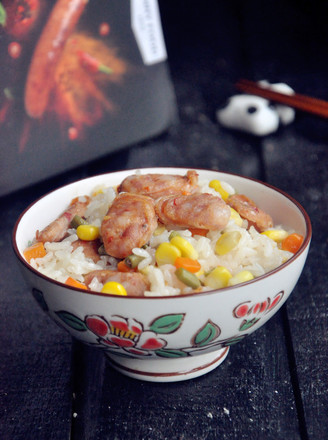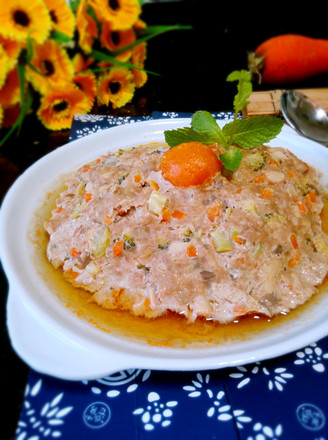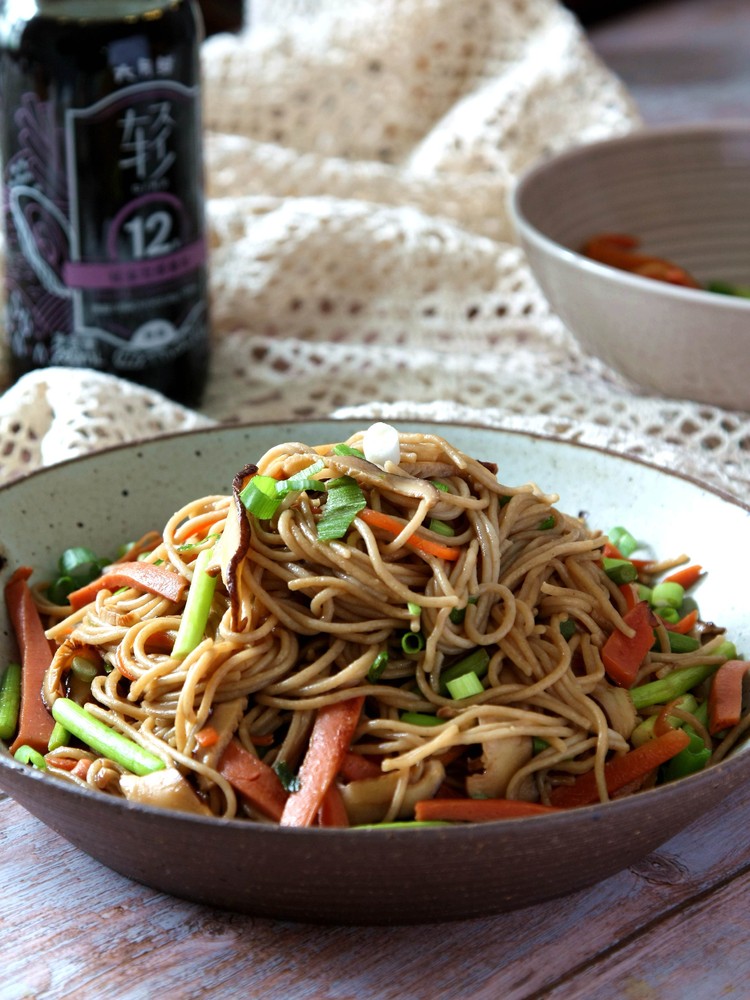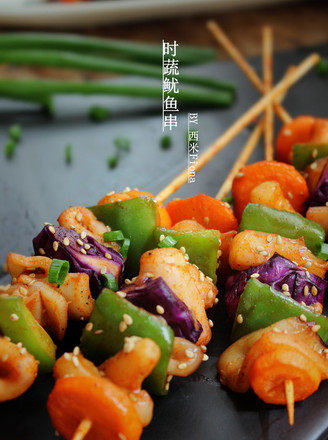[flying Fowl Delicious Classic] "fried Pigeon with Radish and Green Onion"
by Qihai Eco
Favorite
Difficulty
Normal
Time
10m
Serving
2
[Flying Poultry Delicious Classic]---"Scrambled Pigeon with Radish and Green Onion" (Creatively named on November 30)
"Stir-Fried Pigeon with Roots and Vegetables" and "Stir-Fried Pigeon with Radish and Green Onions" are sister dishes of "Fowl Tasty Classic". "Stir-Fried Pigeon with Roots and Vegetables" is the southern flavor, and "Stir Fried Pigeon with Radish and Green Onions" is the northern flavor taste.
Introduction to cooking methods:
1. Wash the pigeon and change the knife into inch pieces, add the chopped green onion, ginger, pepper powder, fine salt, light soy sauce, cooking wine and an appropriate amount of dry starch slurry for about 20 minutes, wash the carrots and cut diagonal blades for later use;
2. Add ginger slices to the pot and stir fragrant, add carrots and stir-fry, take out and set aside;
3. Fry the pigeon pieces in the original pot until the color changes. After six times of maturity, add carrots and stir-fry for a few times, pour in some light soy sauce, water and stir fry over high heat for a while. When the pigeons are cooked, use high heat to season the sauce. , Serve on a plate and serve.
Features:
1. Low-carbon, low oil temperature, no oily fume operation, common ingredients, reasonable food configuration, balanced nutrition, simple cooking, complete color, flavor, shape, and the name of the dish is appropriate, smooth, and peaceful.
2. The dishes are bright in color, green onion fragrant, fresh fragrance, delicate and tender meat, carrots are soft and sweet, rich and delicate in taste, and balanced in nutrition;
3. Vegetable plant rhizomes rich in minerals, trace element nutrition and cellulose and pigeons with high nutritional value are especially suitable for children in the growth and development period, as well as rehabilitation and health care treatments.
Nutritional value:
Suckling pigeon is salty in taste, flat in nature and non-toxic; it has the effect of nourishing liver and kidney, can replenish qi and blood, support toxin and expel pus; it can be used to treat malignant sores, chronic illness, deficiency, and thirst. Regular eating can make the body strong, clear the lungs and smooth the qi. "
"Stir-Fried Pigeon with Roots and Vegetables" and "Stir-Fried Pigeon with Radish and Green Onions" are sister dishes of "Fowl Tasty Classic". "Stir-Fried Pigeon with Roots and Vegetables" is the southern flavor, and "Stir Fried Pigeon with Radish and Green Onions" is the northern flavor taste.
Introduction to cooking methods:
1. Wash the pigeon and change the knife into inch pieces, add the chopped green onion, ginger, pepper powder, fine salt, light soy sauce, cooking wine and an appropriate amount of dry starch slurry for about 20 minutes, wash the carrots and cut diagonal blades for later use;
2. Add ginger slices to the pot and stir fragrant, add carrots and stir-fry, take out and set aside;
3. Fry the pigeon pieces in the original pot until the color changes. After six times of maturity, add carrots and stir-fry for a few times, pour in some light soy sauce, water and stir fry over high heat for a while. When the pigeons are cooked, use high heat to season the sauce. , Serve on a plate and serve.
Features:
1. Low-carbon, low oil temperature, no oily fume operation, common ingredients, reasonable food configuration, balanced nutrition, simple cooking, complete color, flavor, shape, and the name of the dish is appropriate, smooth, and peaceful.
2. The dishes are bright in color, green onion fragrant, fresh fragrance, delicate and tender meat, carrots are soft and sweet, rich and delicate in taste, and balanced in nutrition;
3. Vegetable plant rhizomes rich in minerals, trace element nutrition and cellulose and pigeons with high nutritional value are especially suitable for children in the growth and development period, as well as rehabilitation and health care treatments.
Nutritional value:
Suckling pigeon is salty in taste, flat in nature and non-toxic; it has the effect of nourishing liver and kidney, can replenish qi and blood, support toxin and expel pus; it can be used to treat malignant sores, chronic illness, deficiency, and thirst. Regular eating can make the body strong, clear the lungs and smooth the qi. "

![[flying Fowl Delicious Classic] "fried Pigeon with Radish and Green Onion" [flying Fowl Delicious Classic] "fried Pigeon with Radish and Green Onion"](https://img.simplechinesefood.com/0d/0d841924a736ad7ab80a68e041921a06.jpg)
![[flying Fowl Delicious Classic] "fried Pigeon with Radish and Green Onion" recipe [flying Fowl Delicious Classic] "fried Pigeon with Radish and Green Onion" recipe](https://img.simplechinesefood.com/84/8454480718358c4b2395a0134f428e57.JPG)
![[flying Fowl Delicious Classic] "fried Pigeon with Radish and Green Onion" recipe [flying Fowl Delicious Classic] "fried Pigeon with Radish and Green Onion" recipe](https://img.simplechinesefood.com/33/33ed4bfe2c3852420dcdec3876aec6d1.JPG)
![[flying Fowl Delicious Classic] "fried Pigeon with Radish and Green Onion" recipe [flying Fowl Delicious Classic] "fried Pigeon with Radish and Green Onion" recipe](https://img.simplechinesefood.com/94/94579a34aaf78a6b33a0ad72a4b2fa43.JPG)
![[flying Fowl Delicious Classic] "fried Pigeon with Radish and Green Onion" recipe [flying Fowl Delicious Classic] "fried Pigeon with Radish and Green Onion" recipe](https://img.simplechinesefood.com/37/37ae2923073728dced982695082e2401.JPG)
![[flying Fowl Delicious Classic] "fried Pigeon with Radish and Green Onion" recipe [flying Fowl Delicious Classic] "fried Pigeon with Radish and Green Onion" recipe](https://img.simplechinesefood.com/af/af837d342af67f79cc9698e23292539a.JPG)
![[flying Fowl Delicious Classic] "fried Pigeon with Radish and Green Onion" recipe [flying Fowl Delicious Classic] "fried Pigeon with Radish and Green Onion" recipe](https://img.simplechinesefood.com/b9/b99fdfdad1db3d439df115008bbf3746.JPG)
![[flying Fowl Delicious Classic] "fried Pigeon with Radish and Green Onion" recipe [flying Fowl Delicious Classic] "fried Pigeon with Radish and Green Onion" recipe](https://img.simplechinesefood.com/5b/5be2e5680df9557aabbc8588b1df01b9.JPG)
![[flying Fowl Delicious Classic] "fried Pigeon with Radish and Green Onion" recipe [flying Fowl Delicious Classic] "fried Pigeon with Radish and Green Onion" recipe](https://img.simplechinesefood.com/49/49781c43a7a8c975ef8b80cccce0d898.JPG)
![[flying Fowl Delicious Classic] "fried Pigeon with Radish and Green Onion" recipe [flying Fowl Delicious Classic] "fried Pigeon with Radish and Green Onion" recipe](https://img.simplechinesefood.com/89/890ed03cf16b250682cbd32393723b95.JPG)
![[flying Fowl Delicious Classic] "fried Pigeon with Radish and Green Onion" recipe [flying Fowl Delicious Classic] "fried Pigeon with Radish and Green Onion" recipe](https://img.simplechinesefood.com/14/146cf91846aacbcaf46fd542765d0b8b.JPG)
![[flying Fowl Delicious Classic] "fried Pigeon with Radish and Green Onion" recipe [flying Fowl Delicious Classic] "fried Pigeon with Radish and Green Onion" recipe](https://img.simplechinesefood.com/0e/0eff8489ce3774d18d718d764329dc9a.JPG)
![[flying Fowl Delicious Classic] "fried Pigeon with Radish and Green Onion" recipe [flying Fowl Delicious Classic] "fried Pigeon with Radish and Green Onion" recipe](https://img.simplechinesefood.com/45/453749e2071d1dacfa81690e641a5238.JPG)
![[flying Fowl Delicious Classic] "fried Pigeon with Radish and Green Onion" recipe [flying Fowl Delicious Classic] "fried Pigeon with Radish and Green Onion" recipe](https://img.simplechinesefood.com/f9/f9d757e2308dc6b0c292ff18225c2a05.JPG)
![[flying Fowl Delicious Classic] "fried Pigeon with Radish and Green Onion" recipe [flying Fowl Delicious Classic] "fried Pigeon with Radish and Green Onion" recipe](https://img.simplechinesefood.com/d4/d47d006e643c4904c6ddd9cb6e738d1f.JPG)
![[flying Fowl Delicious Classic] "fried Pigeon with Radish and Green Onion" recipe [flying Fowl Delicious Classic] "fried Pigeon with Radish and Green Onion" recipe](https://img.simplechinesefood.com/d2/d2a61ac60f8d8295c464845e0aaf20d5.JPG)
![[flying Fowl Delicious Classic] "fried Pigeon with Radish and Green Onion" recipe [flying Fowl Delicious Classic] "fried Pigeon with Radish and Green Onion" recipe](https://img.simplechinesefood.com/7d/7d267a056290bd71b8f4a6ed4fd7d180.JPG)
![[flying Fowl Delicious Classic] "fried Pigeon with Radish and Green Onion" recipe [flying Fowl Delicious Classic] "fried Pigeon with Radish and Green Onion" recipe](https://img.simplechinesefood.com/71/7173f5b35ab8e7fd414643bacb4ccdc9.JPG)
![[flying Fowl Delicious Classic] "fried Pigeon with Radish and Green Onion" recipe [flying Fowl Delicious Classic] "fried Pigeon with Radish and Green Onion" recipe](https://img.simplechinesefood.com/2c/2cf796ee62671be2d2aabb3361979d65.JPG)
![[flying Fowl Delicious Classic] "fried Pigeon with Radish and Green Onion" recipe [flying Fowl Delicious Classic] "fried Pigeon with Radish and Green Onion" recipe](https://img.simplechinesefood.com/9d/9d1d3fb0286504d5a3408816c72a5195.JPG)
![[flying Fowl Delicious Classic] "fried Pigeon with Radish and Green Onion" recipe [flying Fowl Delicious Classic] "fried Pigeon with Radish and Green Onion" recipe](https://img.simplechinesefood.com/00/00545e6a702aa7b7fdd65251d5193e6e.JPG)
![[flying Fowl Delicious Classic] "fried Pigeon with Radish and Green Onion" recipe [flying Fowl Delicious Classic] "fried Pigeon with Radish and Green Onion" recipe](https://img.simplechinesefood.com/37/37ff96eae910cd81aa212551303a19e9.JPG)

